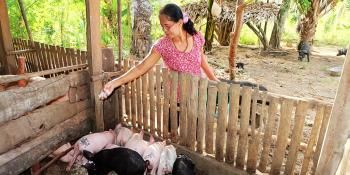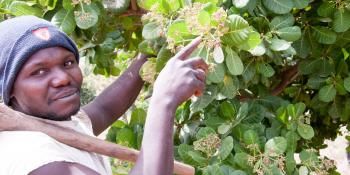Turning down the heat: breeding beans for a changing climate
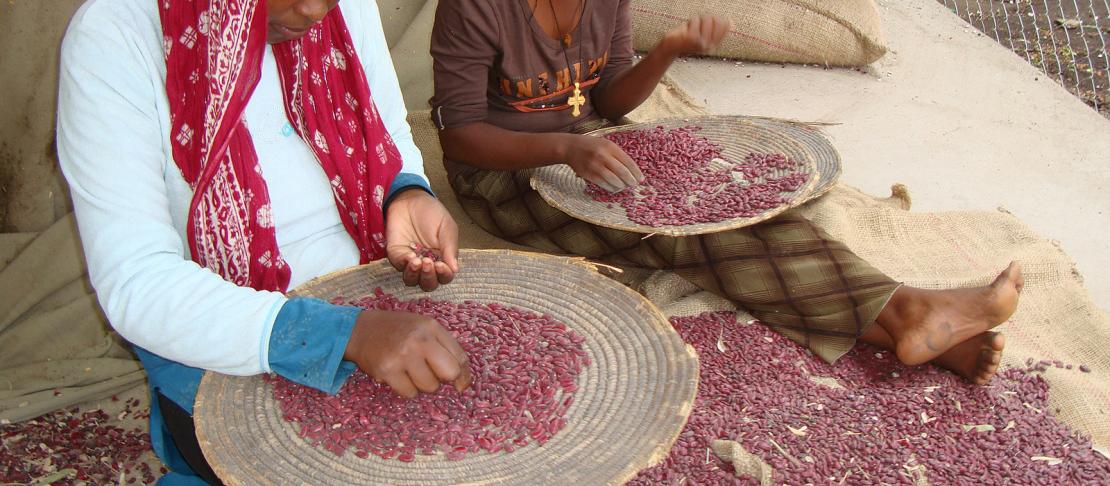
Climate change threatens to reduce the growing area of beans up to 50% by 2050. Prioritizing the breeding and spread of heat-tolerant varieties is a key pathway to strengthening resilience and food security in tropical regions.
CIAT press release: Discovery of beans that can beat the heat could save “meat of the poor” from global warming
New publication: Developing Beans that Can Beat the Heat
Climate change threatens bean productivity in multiple ways
Beans, the so-called “meat of the poor,” are crucial for food security in much of Africa and Latin America, as they are rich in protein and essential vitamins and minerals. However, beans are highly sensitive to increases in temperature and rainfall variation, meaning that even moderate climate change could have a devastating impact on yields. Climate change sets in motion a complex chain of events within ecosystems, and can in turn cause plant disease and pests to spread into new areas, providing additional challenges for farmers. As beans are typically grown by resource-poor farmers, a loss in bean productivity could threaten their livelihoods, and the nutrition of the nearly 400 million people who are reliant on this cheap and hearty crop.
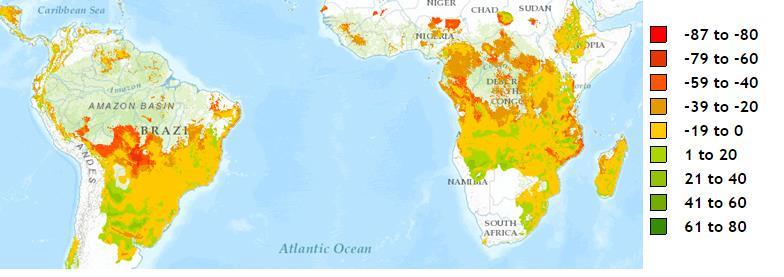
Breeding resilience
Despite the apparent grimness of the situation, there are opportunities to adapt this important food crop to climate change, and safeguard food security. Innovative smallholder farmers are utilizing new solutions, such as shifting planting times or using faster maturing beans, but they may not be enough. Other options that work, such as fertilization and irrigation, are often out of reach for resource-poor farmers as well (Beebe et al., 2011). Plant breeding provides an important alternative in order to withstand environmental constraints, where the beans themselves can be enhanced through a selective process of mixing and matching different varieties. Several CGIAR research centers are hard at work experimenting with such genetic improvements which can be applied by farmers on the ground, providing hope for smallholder resilience with a turbulent future approaching.
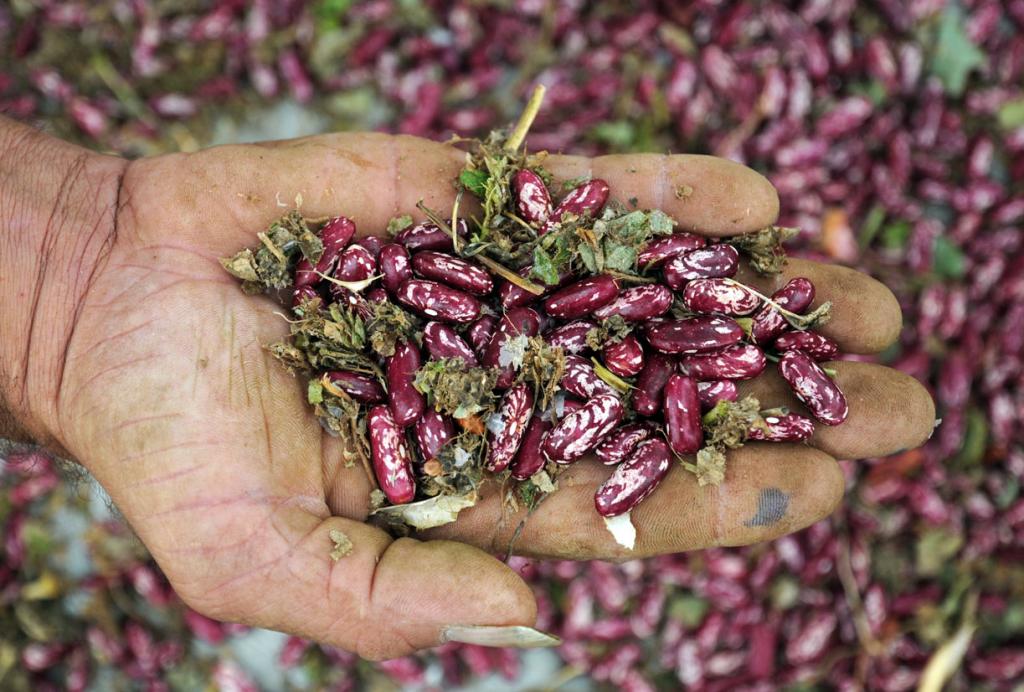
Experimental CIAT beans harvested in Colombia. Photo: N. Palmer (CIAT)
Why focus on beating the heat?
Developing heat-tolerance in beans provides a new pathway to improved food security in a warming world. Drought-tolerance in beans has been on the research agenda at the International Center for Tropical Agriculture (CIAT) for over three decades, producing genetic crosses that are capable of performing better under stress of drought. Comparatively, heat-tolerance has been explored far less, especially in tropical regions. Furthermore, the occurrence of drought or the spread of plant disease and pests can be swift and unpredictable, making it difficult to mobilize proper investments into adaptive measures. Changes in temperature are much more stable and are increasing slowly, which makes it easier to effectively plan in advance.
In fact, research shows that breeding beans for heat-tolerance could have the largest impact of all adaptation options for beans, potentially improving the suitability of 7.2 million hectares of farmland (Beebe et al., 2013). Cultivation could also be extended to areas that are currently too hot. Alternatively, if current bean varieties continue to be utilized, suitable area may decrease 20-50% by 2050, according to a forthcoming report from the CGIAR Research Program on Grain Legumes.
Scientists from the CGIAR Research Program on Climate Change, Agriculture and Food Security (CCAFS) have been engaged in modeling the potential of heat-tolerant bean lines, in order to test the adaptive potential of the technology. According to Julian Ramirez-Villegas, who has been in charge of investigating the suitability of heat-tolerant beans, the findings are optimistic. “We found that even conservative estimates of heat tolerance would [eliminate suitability loss in] “warm” locations where beans are close to their limit to 2050s, no matter how pessimistic the climate scenario is, and to some 60-80% of climate scenarios by 2100.”
Ramirez-Villegas stresses the importance of cross-program collaborations between CGIAR centers, where CCAFS’ modeling work plays a crucial role in guiding the real-world needs of plant breeding programs. “We’re collaborating with breeders and physiologists to explore avenues in which models can provide information that is useful to set future breeding priorities.”
An uphill battle
There are still considerable challenges ahead for breeding tolerance to the effects of climate change. Cross-breeding is a long-term effort, as overcoming negative genetic linkages is a highly complex and time consuming process. Patience is a necessity, although the pressure to find solutions is high. But even if the breeding for process is successful, ensuring that impacted farmers adopt the new beans is no easy task. The fact that climate change induced warming is a slow burn, may make it difficult for farmers to realize the necessity of using new breeds — not to mention the logistical puzzle of seed distribution (Beebe et al., 2013).
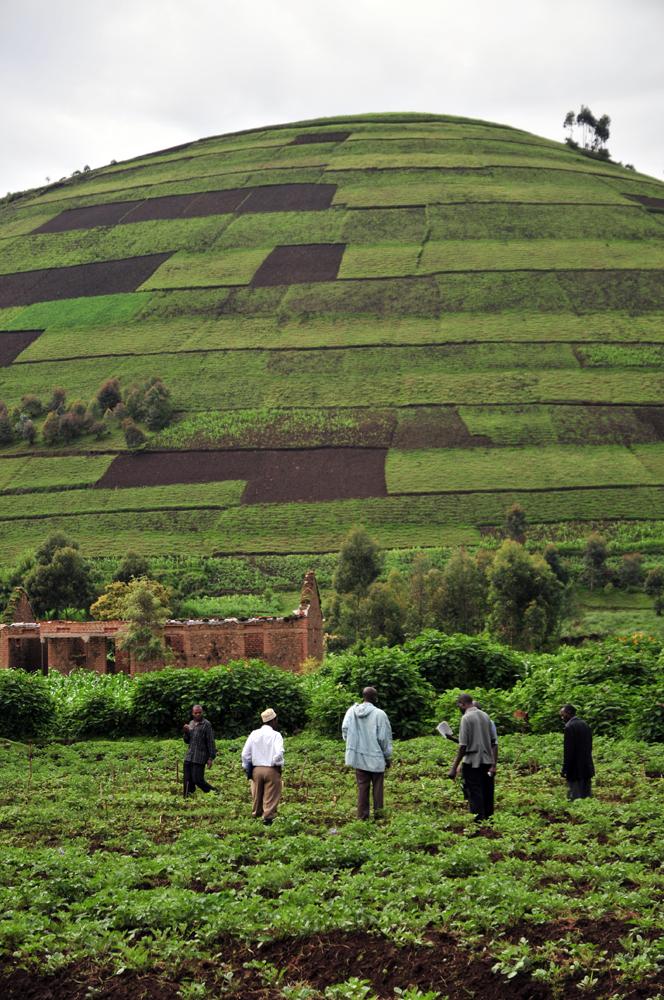
Securing bean productivity in a warming world may be an uphill battle. Photo: N. Palmer (CIAT)
Getting the word out with Climate-Smart Villages
CCAFS has launched a program of Climate-Smart Villages (CSVs), which could be instrumental in overcoming this hurdle. CSVs are tasked with testing new interventions on the ground — such as heat-tolerant beans — through participatory research which engages farmers in some of the most at-risk areas. Heat-tolerant beans are currently being tested in CSVs along with a bundle of other complementary approaches. This process not only helps researchers find out how the approaches work together in a local context, but also empowers farmers to share their own knowledge and practices, and spread the word to their colleagues. CSVs have proven to be important vehicles for resilience, and have already gotten hundreds of Ugandan farmers involved with research on drought-tolerant beans, and tripled bean yields in Tanzania by facilitating the distribution of improved seeds.
References
- Beebe S, Ramirez J, Jarvis A, Rao IM, Mosquera G, Bueno JM, Blair MW. 2011. Genetic Improvement of Common Beans and the Challenges of Climate Change. In: Yadav SS, Redden RJ, Hatfield JL, Lotze-Campen H, Hall AE, eds. Crop Adaptation to Climate Change. John Wiley & Sons, Ltd.
- Beebe S, Rao I, Mukankusi C, Buruchara R. 2013. Improving Resource Use Efficiency and Reducing Risk of Common Bean Production in Africa, Latin America, and the Caribbean. In: Hershey CH, Neate P, eds. Eco-efficiency: From Vision to Reality. Colombia: CIAT.
Snorre Frid-Nielsen is a student assistant at the CCAFS Coordinating Unit, contributing to policy engagement and research.

